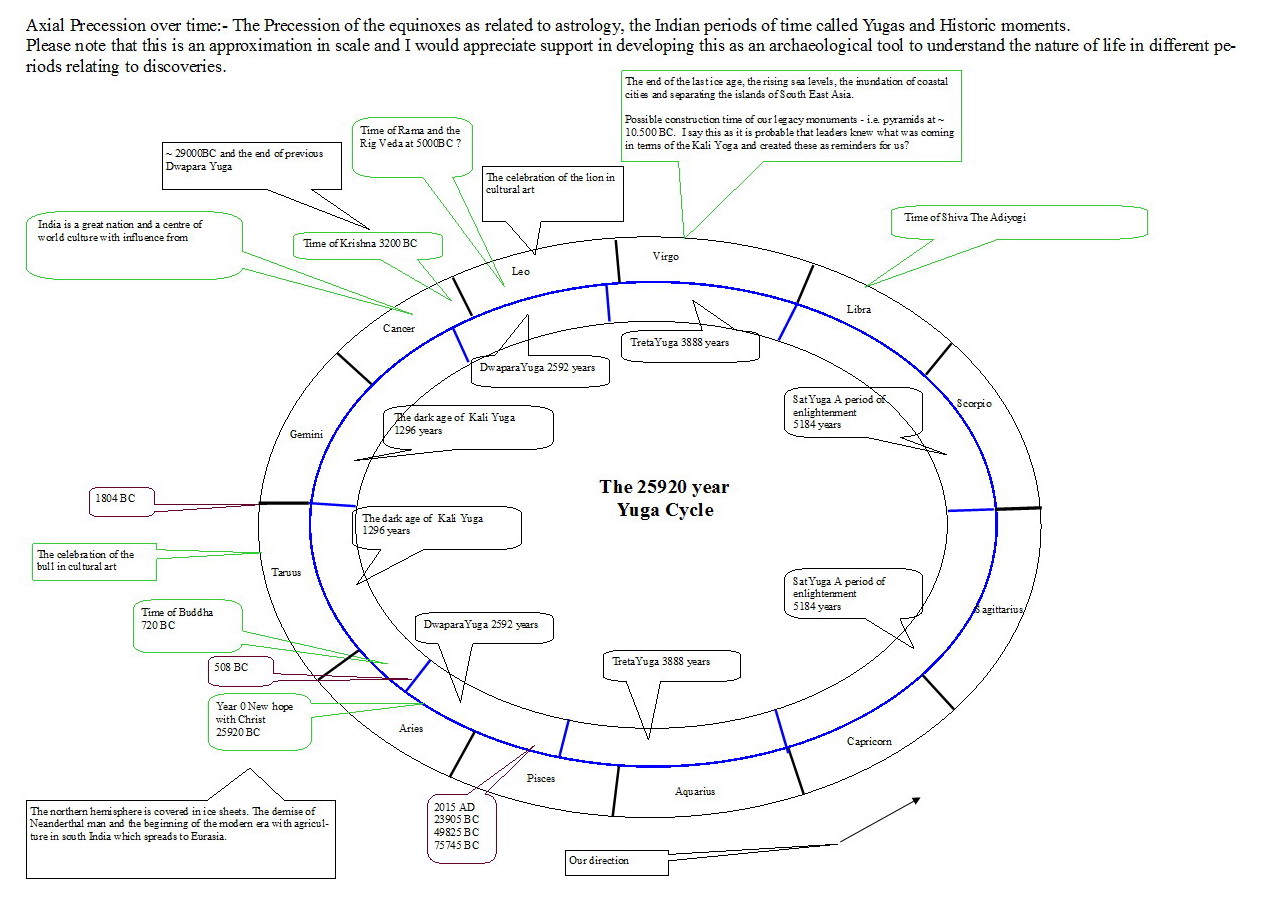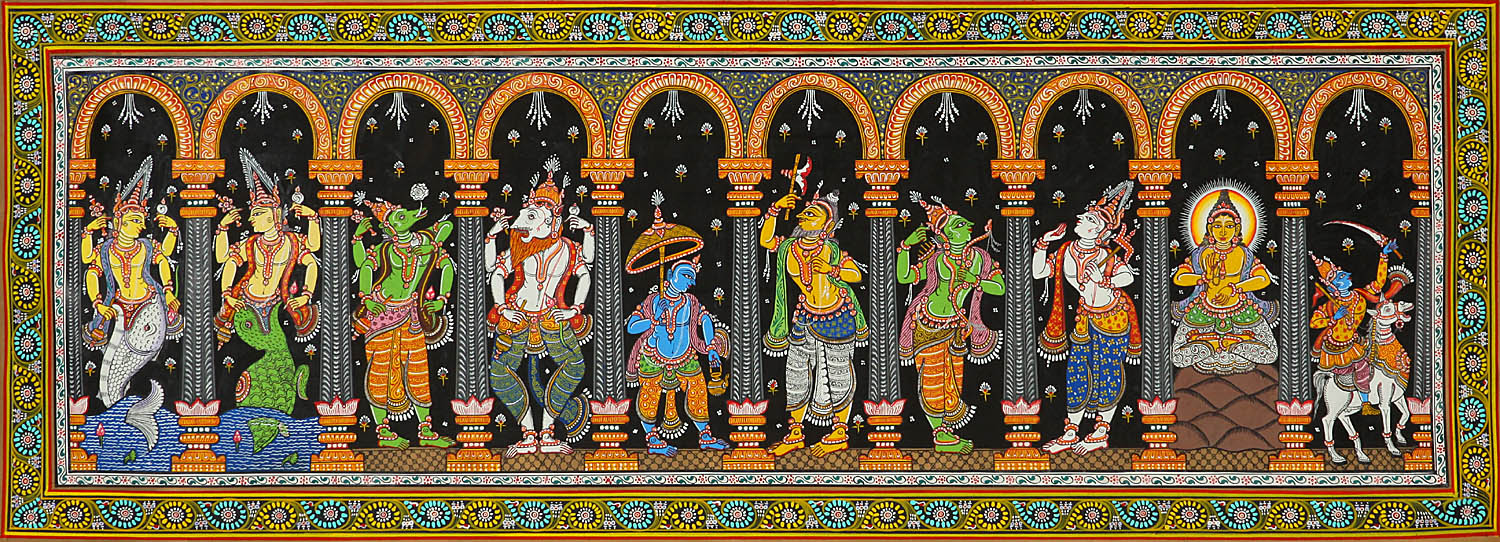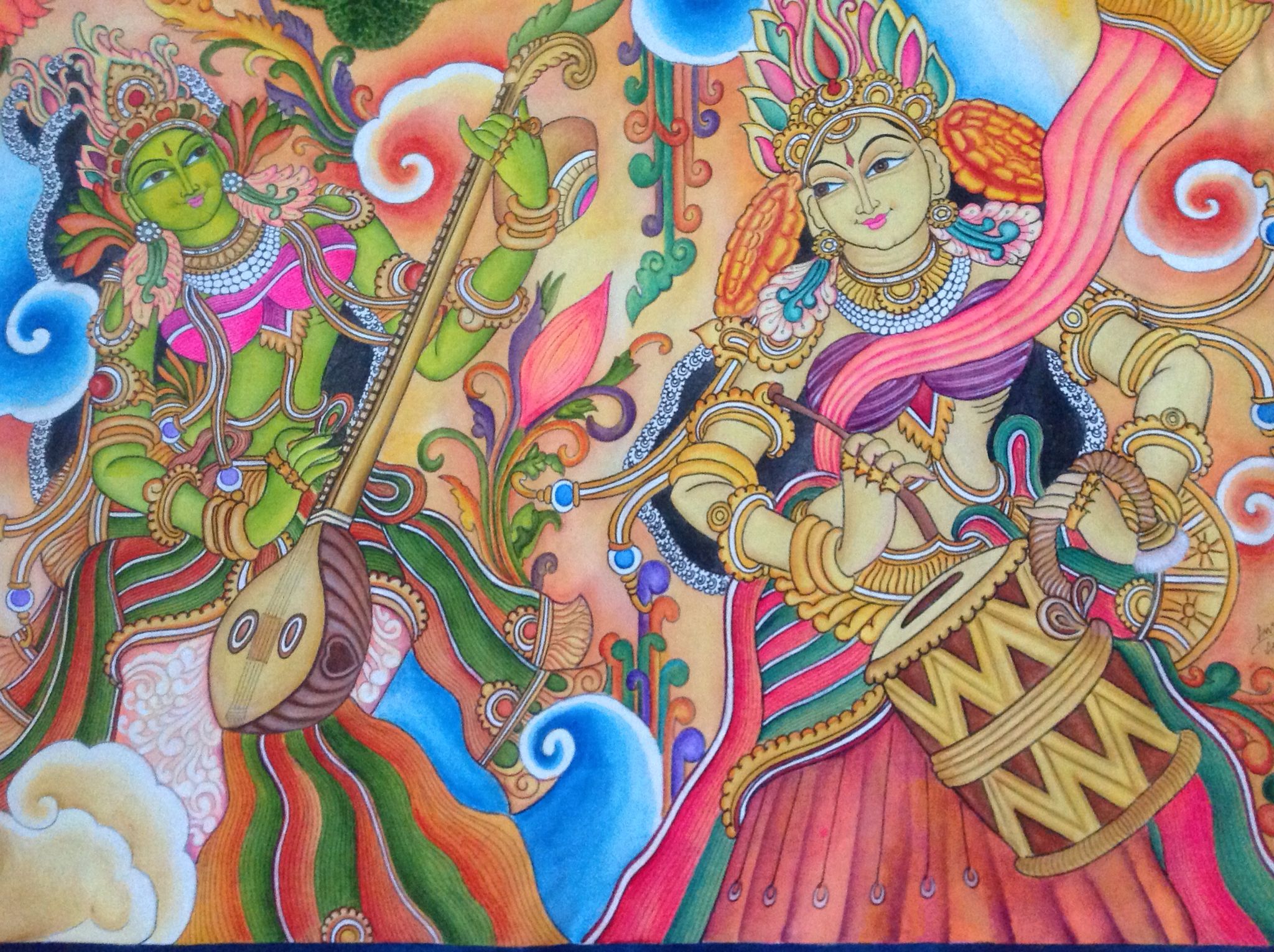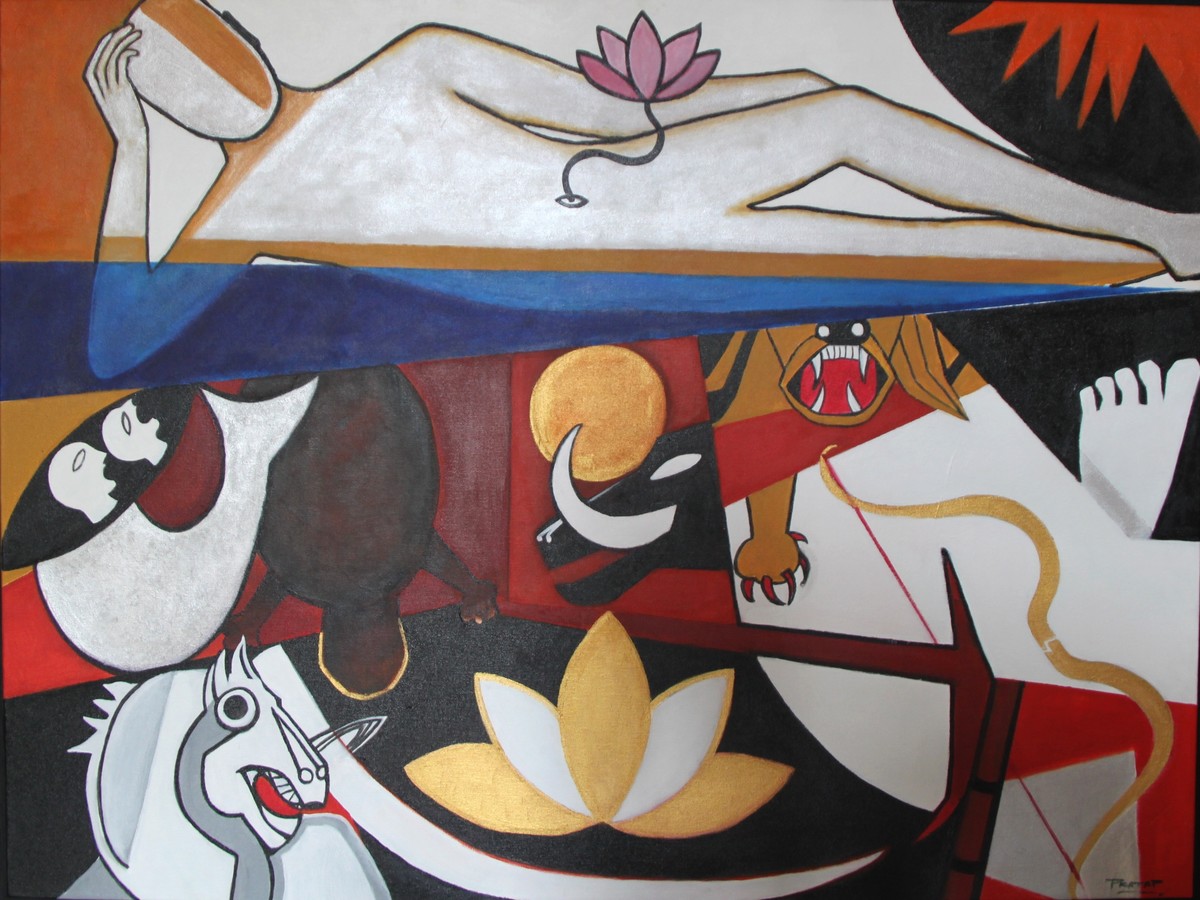
The following article by David Frawley (Pandit Vamadeva Shastri) is adapted from Astrology of the Seers, by David Frawley
Who knows now and who can declare the paths that lead to the God; only their lower habitations are visible, who dwell in regions of supreme mystery. Rig Veda III.54.5

According to the Vedic seers, life on Earth is under the rule of vast cosmic forces that originate from the stars. All that happens locally on our planet is a result of forces coming from the distant regions of the universe. These are not just distant regions of the physical world, but also of the cosmic mind, the mysterious origin of things from which the underlying forces of creation arise. These forces determine the nature of the time in which we live. Usually we are so involved in the transient events of our personal lives that we miss these great powers altogether. Like fish, we fail to see the ocean.

Just as we resonate to the seasons of the year, so too are we individually and collectively under the rule of various time cycles. Each person, each nation, and each humanity has such a cycle, as does the planet itself. We exist at different stages in the processes of birth, growth, decay and death, not just in our bodies but also in our minds and souls. Yet this is not just a mechanical round that goes nowhere. Behind the cycle of time lies an ongoing evolution of consciousness. Just as a tree has annual cycles of growth and retreat but continues to grow year after year, so all things have an inner growth process in which consciousness continues to develop through life after life.
The Lesser Cycle of World Ages
The main time cycle governing the human race, the seasons of humanity, is the precessional cycle. This period of 25,000 years is about one year in the life of humanity. According to some Vedic astrologers, it reflects the period of revolution of the Sun around a dark companion. According to them, the Sun is a double star but its companion appears to be a dark dwarf possessing no real luminosity of its own. Modern astronomers have begun to suspect the existence of such a star and have postulated its existence to explain irregularities in the orbits of Neptune and Pluto, which suggest the gravitational influence of a more distant heavenly body within the solar system.

Besides the light from our own Sun, we also receive light from the center of the galaxy, the galactic Sun. Much of the light of this greater Sun, however, is not in visible frequencies. Some astronomers have suspected a central galactic light, like that of a quasar, whose light may be obscured by dust or nebulae in the region of the galactic center. According to Vedic astrology, the light from this galactic source has a special influence upon Earth. It nourishes and sustains intelligence in human beings. This is not the materialistic intellect but true intelligence, the capacity to perceive the real or divine spirit in things and act according to the Divine Will.
When the Sun is located on the side of its orbit where its dark companion comes between it and the galactic center, the reception of the cosmic light is reduced. At such times there is a dark or materialistic age on Earth. When the Sun is on the opposite side of its orbit and has an open reception to the light of the galactic Sun, there is a golden or spiritual age on Earth. Humanity then acts in harmony with cosmic intelligence and with Divine powers that are its functionaries and emissaries. The Sun’s dark companion appears to possess a negative magnetic field that obstructs the cosmic light from the galactic center from reaching the Earth. Through this it creates cycles of advance and decline in human civilization.
Modern astronomy estimates this cycle at around 25,900 years. The rate of yearly precession does not appear fixed, so this duration is only approximate. Manu, the great Vedic lawgiver for the human race in the Golden Age, in his teaching the Manu Samhita (I. 68-71, also note The Holy Science, Sri Yukteswar, p. 11), places this cycle at 24,000 (100 x 240) years. Other Vedic astrologers have placed it at 25,920 years (108 x 240, with 108 being the occult or mystic form of the number 100). While the exact details are not known, the general affect of the cycle is certain.

Ancient astrology places humanity under the legendary four ages: the Golden, Silver, Bronze and Iron ages. We find this idea among the Greeks as well as the Hindus, but the time periods involved are not given. In Sanskrit these are called the yugas or world ages of Satya (which means truth, also called the fourth age), Treta (the third), Dwapara (the second) and Kali (the first). Manu fixed their duration at, respectively, 4000, 3000, 2000 and 1000 years, plus a transitional period of 1/10 of their respective length both before and after.
This makes a total of 4800 years for the Satya Yuga, 3600 for the Treta Yuga Age, 2400 for Dwapara Yuga, and 1200 for Kali Yuga. The total for all four ages is 12,000 years. Two cycles of the four ages make up the 24,000-year precessional cycle.
Each precessional cycle is divided into two halves: an ascending half, in which the Sun is moving towards the point on its orbit closest to the galactic center, and a descending half, when it is moving towards the point on its orbit furthest from the galactic center. In the ascending half we move from Kali to Dwapara, Treta and Satya Yugas. In the descending half we move from Satya to Treta, Dwapara and Kali Yugas. This creates a cycle, ascending Kali, Dwapara, Treta and Satya Yugas, then descending Satya, Treta, Dwapara and Kali Yugas. In this system we do not move directly from Kali to Satya Yuga, as some other interpretations indicate, but must pass through all the intermediate ages.

The level of true intelligence on Earth diminishes one quarter for each world age. At the high point of Satya Yuga it is 100%, at the low point of Kali Yuga 25%. In Dwapara Yuga it is 50% and in Treta 75%. The bull of the dharma, who loses one leg during each of the declining yugas, symbolizes this.
According to some Vedic astrologers, the point of the Sun’s orbit furthest from the galactic center occurred around 500 AD. This was when the point of the vernal equinox was at the first degree of Aries. This was the point of greatest darkness on Earth, since which there has been a gradual increase of light. Variant views would place this date sometime between 200-550 AD, as it is the same issue as that of the ayanamsha.
Therefore, while many Western astrologers already put us in the Age of Aquarius, Vedic astrologers would place its advent up to 500 years in the future (though by other measurements given here, some of them do agree that we are in a different world age this century). The historical dates that correspond to the four Vedic world ages (as given by Sri Yukteswar in his book The Holy Science, pp. 12-3) are as follows:
Descending Yugas
| Satya | 11,501 BCE – 6701 BCE |
| Treta | 6701 BCE – 3101 BCE |
| Dwapara | 3101 BCE – 701 BCE |
| Kali | 701 BCE – 499 AD |
Ascending Yugas
| Kali | 499 AD – 1699 AD |
| Dwapara | 1699 AD – 4099 AD |
| Treta | 4099 AD – 7699 AD |
| Satya | 7699 AD – 12,499 AD |
Considering the transitional periods, there is an intermediate age between Kali and Dwapara Yugas at 1599-1899 AD. By this we see that we are in the ascending Dwapara Yuga. This is the New Age into which we have just entered, as evidenced by the great advances in science and technology. It is no longer the dark Kali Yuga, as some continue to think, yet it is far from Satya Yuga as well. Moreover, Dwapara is still in its early stages and has not presented its complete form at this stage. This may not occur for a few centuries, perhaps not until the vernal equinox actually does enter into Aquarius. Until then, some difficulties in moving into this new era will occur, with wars, pollution, famine and possible cataclysms as indications of it. This system is approximate and may have to be modified, but its general features are quite useful in helping us understand the development of human history.
The Greater Cycle of World Ages
According to the more common view of Hindu astrology, humanity is in a Kali Yuga, a dark or Iron Age of 432,000 years, said to have begun around 3102 BCE. We should note, however, that this view is a speculation of medieval thinkers and has several problems, not to mention how pessimistic it appears! Even from the standpoint of Vedic historical records, its accuracy is questionable. Ancient texts mention many kings and sages, not just of the preceding Dwapara Age, but also of the Satya and Treta yugas. If this longer yuga cycle is used, such people would have to have lived hundreds of thousands of years ago, if not millions!
For example, the avatar Rama is a figure of the end of Treta Yuga, the Silver Age. He is placed in Puranic king lists some thirty-five generations before Krishna. Yet if the Kali Yuga of 432,000 years began at 3100 BCE, Rama would have to have lived at least 868,000 years earlier in order to be in the Treta Yuga of this longer cycle. According to the precessional view of the yugas advocated by Sri Yukteswar, Rama would have to have lived somewhere not long before 3100 BCE in order to be in the Treta Yuga, and this is a much more likely date.
However, this issue is complicated because different cycles exist, both shorter and longer. Besides the 25,000 year precessional cycle, there must be other longer cycles of hundreds of thousands and millions of years, just as our ordinary lives encompass cycles within cycles of the day, the month and the year.
From the standpoint of such a greater cycle, we may indeed be in a Kali Yuga, perhaps one of 432,000 years (though I am not certain of the duration or point of beginning). Within that greater cycle of Kali Yuga, however, we do appear to be in a lesser cycle Bronze Age phase of 2400 years or so.
Humanity may appear to be in a greater dark age phase because, as evidenced in the Vedas, even in Satya and Treta Yugas the great majority of human beings were on a materialistic or vital plane level, concerned mainly with the ordinary goals of family, wealth and personal happiness. Only the higher portion of humanity, the cultural elite of a few percent, appears to experience the full benefits of the ages of light. This is the same as today, when the majority of human beings live on the same emotional level as always, and only a few really understand the secrets of science and technology, though all benefit from them. This greater Kali Yuga, however, may not have started in 3102 BCE. We may not have enough information yet to know exactly when it began or how far into it we are.
The confusion between the lesser and greater cycles has led to some errors in the occult view of history. H.P. Blavatsky and her followers exemplified such confusion, as they based their views on the Hindu texts that used the longer cycle and did not understand the precessional cycle. This caused Blavatsky to make the ages of ancient civilizations and earlier humanities many times longer than they probably were. On the other hand, modern historians, with their lack of sensitivity to spiritual knowledge, make ancient cultures many times shorter than they were. The truth appears to be that ancient civilizations like India go back at least ten thousand years in this cycle. A number of earlier cycles of civilization occurred tens of thousands of years before this one.
A civilization cannot apprehend the existence of any culture higher than itself in the cycle of world ages. Our current accounts of history go back only to the cultures of Dwapara Yuga that began around 3100 BCE, like ancient Egypt and Sumeria. Such cultures were typical of the entire world at the time. Earlier cultures of the Treta and Satya yugas existed as well. These we cannot find, because we do not understand the level on which they occurred. While highly spiritual, they were not advanced technologically. The existence of the cultures of the previous cycle of world ages before 12,000 BCE remains entirely unsuspected. The flood that followed the end of the Ice Age eliminated their traces.
It is not possible to say how many but civilizations such as we know of have been in existence for many tens of thousands of years. Nor is there any end to such cycles in sight. By some accounts, it may take up to a million years of evolution for the average soul to pass through the human domain. In this regard the human race may be quite young, even at an age of several hundred thousand years old.
Technology, particularly in its gross contemporary form with all its pollution, must be a rare and transient phase of human culture. It cannot exist very long, at most a century or two, without destroying the planet. If it existed in previous humanities, as it may well have done, it would have been passed through quickly and the damage it caused would have been cleaned up (which is why we find no traces of it). We must develop a cleaner and more natural form of technology, like solar energy, in order to survive in the long run as a species.
The majority of human cultures have always been religious and spiritual rather than materialistic in nature. All ancient and medieval cultures were of a religious bent, and those of the Orient have remained largely so into the modern age. Technology, particularly in its invasive form that disrupts the natural environment, does not characterize human culture. It is a temporary deviation from true human culture, which is that of the spirit.
Each precessional cycle marks a different age of humanity. Our present world age began with the end of the Ice Age over ten thousand years age. Its early beginnings, Satya and Treta yugas, are recorded in the hymns of the Rig Veda, the oldest scripture of India. Traces of this teaching are found in mythology all over the world and in the ancient worldwide solar religion. What archeologists see as the beginnings of agriculture and civilization in early ancient times was merely a shifting of culture brought on by many geological and climatic changes relative to the new age.
According to the Vedic view and the testimony of the ancients, the Earth goes through major changes of geography and climate. For example, a mere ten thousand years ago Chicago was under a permanent mass of ice, as was much of the northern hemisphere. Such global renovations are experienced by human beings as cataclysms, earthquakes, and floods. Many such dramatic changes are recorded in books like the Bible or the Vedas. While they are often dismissed as superstition, evidences of the ending of the Ice Age, great earthquakes and floods can be found in the ancient world. Important rivers of Vedic times, like the Saraswati, have long since gone dry, though we can trace their dry river banks through aerial photographs. Such global cataclysms usually correspond with changes of world ages. Nature goes through constant changes and the Earth is periodically renovated a process which includes clearing out the influences of previous humanities.
It is difficult for humanities of one world age to see or appreciate those of a previous world age. Our present world age humanity originated with certain seed cultures in the Himalayas during the end of the Ice Age. The previous world age humanity was Atlantean. Only students of the occult accept the existence of previous world ages, with different opinions abounding. Some of these opinions are based on racial memories that may be subjective or confused. Yet the existence of such cultures long before the so-called beginnings of history is beyond doubt to those of deeper perception.
Ascending and Descending Cycles
The two halves of the precessional cycle have their characteristic differences of mentality. In the descending side the spiritual energy is decreasing or retreating from a point of fullness, while in the ascending side it is increasing and expanding from a point of deficiency.
It is difficult for cultures in the ascending half of the world ages to understand those in the descending half. Descending cultures, like those of the Orient, are traditional, conservative and authoritarian. They are trying to preserve the light of truth from the past, the previous ages of light. Most ancient cultures were of this order. Ancient Egypt was a typical descending culture. It became so enmeshed in its cult of the past (which became a cult of death) that it eventually perished of its own inertia.
Ascending cultures, on the other hand, are non-traditional, liberal and revolutionary. They are moving towards the light of truth in the future, which has yet to be defined. Western culture is based upon Greco-Roman influences which go back only to 500 BCE and did not entirely surface until the Renaissance. Hence it cannot understand cultures that originate from earlier world views. America today is a more limited type of ascending culture, as its origins go back only a few centuries. It is basically an ascending Bronze or Dwapara Yuga culture. It is characterized by a certain seeking of light and truth but in a superficial and outward manner.
Not surprisingly, a natural misunderstanding exists between descending and ascending, traditional and non-traditional cultures, such as we observe in the world today. Descending cultures are based on a higher spiritual truth, but it has often become so rigid, traditionalized and stereotyped that they may misrepresent it, as with the caste system in India. Ascending cultures are more open and creative, with a freedom of thought and inquiry, but often in an arbitrary way that may be far from any real basis in truth. They appear immature, materialistic and sensate oriented.
We must combine both these cultural influences in a positive way. The freedom and humanitarianism of the ascending mind needs the balance of the reverence and spirituality of the descending mind. As we go forward in our cycle of development we will be able to see back further and achieve such an integration. This is one of the great challenges of the world today, and one that can only be met with great effort. The divisions of East and West, spiritual and material, ancient and modern – divisions which are so strong in our minds – show this problem.
Yet within all these cycles exists an ongoing human evolution, a spiral of growth. Even if it falls back for a time, it will arise again with new force. Though we have declined spiritually from ancient cultures, we may have gained something materially and intellectually that can enhance our ascent back to those heights. Ultimately, humanity is moving to the point where we can transcend all external influences and live in a perpetual Golden Age in which we can return to the inner Self which stands above the influences of time. No one can say when this great leap will occur. It is possible at any time; but so far it has been quite rare, even for individuals. We cannot expect it soon for the majority. Some of us can see the greater potentials of our world age. Fewer can see the potentials of more advanced world ages. Still fewer can discover the eternal that is our real home; but even one such soul becomes a beacon for all humanity and shakes the foundation of the ignorance that rules us.
Harmonization with the Galactic Center
An important cosmic event is occurring now. The winter solstice is now at a point of conjunction with the galactic center. There is some doubt as to the exact location of this point. I would place it at 06º 40′ Sagittarius, or the middle of the nakshatra Mula. Depending upon the ayanamsha one uses, this conjunction may be occurring either right now or in the next few decades. The same event appears mirrored in the calendric calculations of the Maya, a culture that shared many practices with the Vedic people.
This indicates a harmonization of humanity with the Divine will as transmitted from the galactic center. The new spiritual thinking of today may be a result of this attunement process, which insists that we enter into a new ascending age of light and cast off the shadows of the dark ages of strife and dissention. Though some global shock and suffering must be endured, the outcome can only be ultimately for the good. We should have faith in the Divine will behind this process and not give in to the despair that the present state of the world must evoke in us. Though we may not be quickly ushered into an age of enlightenment, much positive growth will occur. A shift in history as significant as any to date will be experienced, with a movement from darkness to light and a new seeking of consciousness.
By the accounts of ancient thinkers like Plato, the flood that destroyed Atlantis and ended the Ice Age occurred about 9300 BCE (9000 years before Plato). This was when the summer solstice was in conjunction with the galactic center, a point completely opposite the one today. Such new cataclysms are possible in the coming century, particularly as we continue to disrupt and destroy our ecosystem. More reverence for the cosmic powers would be a good thing for our culture. We live under cosmic laws, which, having violated, we must suffer for. It was not just superstition that caused the ancients to tremble before God and beg his mercy. It was such experiences of global retribution that we may yet also see. Unless we learn to respect our planet, nature, other creatures and spiritual teachings, we as a species may have to undergo a great purification that will not be pleasant for anyone.
The Star Vega or Abhijit
Vedic astrology regards the North Pole as the spiritual pole of the globe from which higher spiritual influences come into the planet. However, the North Pole star does not remain the same throughout the precessional cycle. At the opposite side of the precessional cycle, the point of greatest light, the bright star Vega (alpha Lyra) serves to mark the North Pole. Vega is part of a special constellation which is used in Vedic astrology and which is called Abhijit or “complete victory;” it is ruled by Brahma, the cosmic creative power.
Vedic astrology shows a connection between our sun and the star Vega. Vega may be a controlling star for our Sun, its guide; or perhaps our Sun may revolve around it or with it around some greater center. Vedic astrology looks back to a time some fifteen thousand years ago when Vega was the North Pole star. Apart from the galactic center, Vega may be another important point of light that governs life on Earth.
